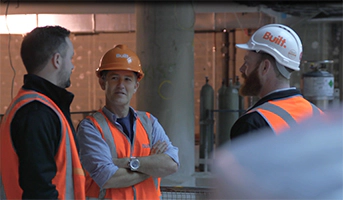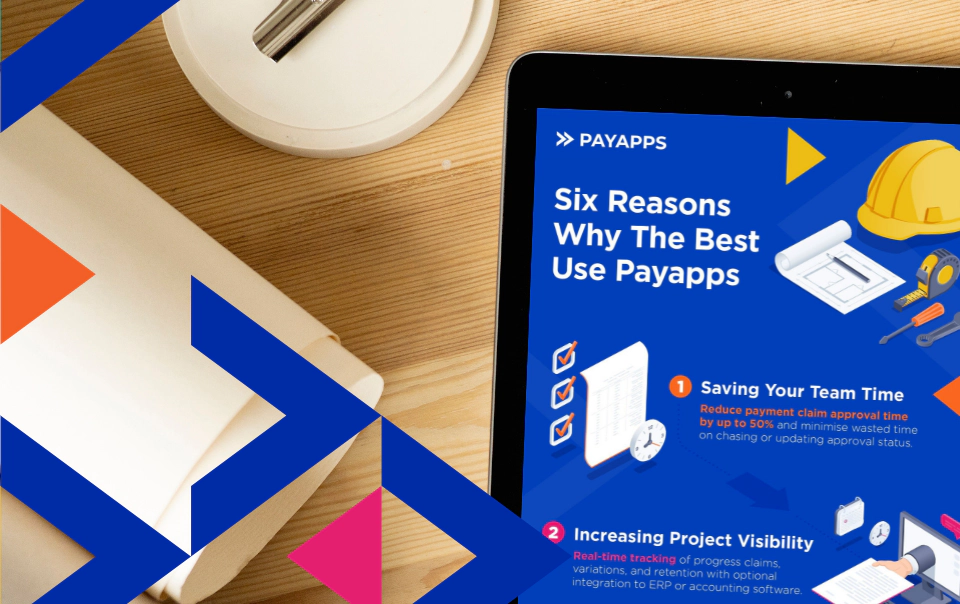THE RELATIONSHIP BETWEEN A CFO AND CIO IN THE CONSTRUCTION INDUSTRY CAN BE UNDENIABLY FRAUGHT. THE TWO EXECUTIVES OFTEN FIND THEMSELVES AT OPPOSITE ENDS OF THE BOARDROOM TABLE, ONE TASKED WITH REDUCING FINANCIAL RISK AND THE OTHER LOOKING TO GET AS MUCH PRODUCTIVITY AS POSSIBLE FROM AN OFTEN LIMITED TECHNOLOGICAL BUDGET.
But financial services technology (fintech), data analytics and cloud-based solutions are playing a significant part in redefining the remit of these two executive roles. In today’s hyper competitive building environment, with tighter deadlines, shrinking margins and increased penalties, the financial and operational success of a construction business has as much to do with savvy investments and strategic risk management as it does with innovation and the ability to embrace new technologies.
As building designs become increasingly sophisticated and compliance requirements more complex, there’s no lack of innovative technologies being adopted across the Australian building sector, from Building Information Modeling (BIM) and project management platforms, to drones, robotics and high-tech safety equipment. However, no one person or department can lead all the changes required for digital transformation in the data-driven age. Given the areas of expertise of CIO’s and CFO’s, their collaboration is integral to the success of each and every major construction company.
Construction industry CFO’s must be well versed when it comes to strategy, analytics, operations and even talent management. In many respects, these ‘Renaissance CFOs’ are now key drivers when it comes to effecting changes to operational efficiency, a clear crossover with the traditional function of the CIO. A priority shared by CIO’s and CFO’s alike is that any investment must reap returns for the business, whether that return is measured in terms of finances or productivity.
Construction is one of the largest growth sectors in Australia, and worth around $300 billion a year to Australia’s economy. Yet it’s also a litigation-heavy industry, responsible for two-thirds of all industrial disputes in Australia. The majority of these disputes arise from missing payments and inaccurate invoices along the contractor chain, simple mistakes that can arise from the traditional arduous manual job of progressing claims. When I moved across to start my nine-year stint as CFO for a building company, it was a real shock to see that even the most basic technology processes that had been used for decades in consulting and finance were nowhere to be seen in the multibillion dollar construction industry.
There had to be a better way, especially when it came to processing progress claim payments; a major gripe for developers and building contractors around the world. Which is why Payapps was created; to pull construction contract administration out of the dark ages of endless manual excel spreadsheets, reconciliations and email exchanges. From our experience, the most innovation active companies we deal with have a CFO that can recognise the bottom line and risk mitigating benefits of a fintech solution and a CIO that can see the productivity and efficiency wins.
It’s clear that there’s plenty of room for improvement, not least ironing out misunderstandings between CIO’s and CFO’s as to the challenges and complexities the other faces in their role. But, as can be seen in the construction industry, it’s clear that it takes collaboration between CIO’s and CFO’s to drive innovation. Only together will they be able to identify future-proof opportunities that new technological developments, particularly in the Fintech space, can provide for their business.




